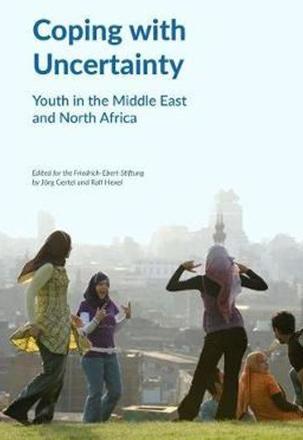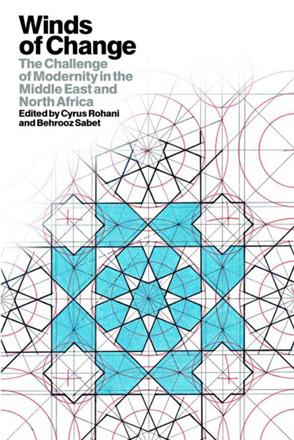You are here
Optimism despite precarious existence
By Sally Bland - Dec 30,2018 - Last updated at Dec 30,2018

Coping with Uncertainty: Youth in the Middle East and North Africa
Edited by Jorg Gertel and Ralf Hexel
London: Saqi Books, 2018, 380 pp
This book is the product of a project undertaken by Germany’s Friedrich-Ebert-Stiftung in partnership with the University of Leipzig and other research institutes in Germany and the MENA region.
It presents the results of a 2016-17 survey of 9,000 young people aged 16-30 in Bahrain, Egypt, Jordan, Lebanon, Morocco, Palestine, Tunisia and Yemen, as well as Syrian refugees in Lebanon.
The study was oriented towards two overarching questions: “What does the situation look like for the youth six years after the so-called Arab Spring? And how do young people deal with the new insecurities and uncertainties of their everyday lives?” (p. vii)
The motivation for such extensive interviews was to fill a gap: Although there has recently been discussion of the “youth bulge”, and the problem of high youth unemployment, according to the editors, reliable, comprehensive, concrete data on youth was lacking.
In this book, clearly delineated charts show the answers to the detailed survey questions in a way that allows comparison by country, gender, age group, marital and socio-economic status, as well as other criteria, while scholars interpret the statistical data in 15 articles.
“The analytical focus of this study concentrates on the situation of young people after severe societal disruptions, including the financial crisis (2007-8), the Arab Spring (2010-11), and the more recent migratory and refugee movements triggered by armed conflicts in Syria, Libya and Yemen. These developments emphasise the meshing of global dynamics anew.” (p. 33)
The respondents were asked questions about their expectations, priorities, values, religiousness, use of social media, attitudes towards changing gender roles, family, politics, civic engagement and more.
While it is undisputable that this generation is on average much more educated than their parents, the prospects of them finding viable jobs and attaining economic security are significantly reduced due the structural adjustment plans imposed over the last several decades, which entailed privatisation, drastic cut-backs in the government sector and public services, as well as increasing global inequality. Thus, coping strategies that worked in the past are no longer successful: “The increasing instability of working conditions and enforced precariousness of an ever better-educated generation is striking.” (p. 154)
While some of the young respondents’ answers are fairly predictable, there are also some big surprises. The crucial role of family has not diminished; nor has religiosity, but for the majority it is unconnected to political Islam.
“Rather, it is a personal decision to trust in God. This leads, as evidenced in the qualitative interviews, to a kind of optimism that is remarkable in the face of insecure living conditions, armed conflict and uncertain prospects for the future.” (p. 64)
Also, contrary to the impression one gets from the media, “a remarkably small number of young Arabs intend to migrate, a surprising find against the backdrop of the multiple crises they are experiencing… more than half of the surveyed youth, with the exception of Tunisians, categorically rule out the option of migration for themselves; between 48 and 71 per cent, depending on the country”. (pp. 198 and 204)
Moreover, it is counted as “a remarkable finding that women from the upper-middle and highest economic stratas stated that having a good marriage is less important than securing a good job”. (pp. 106-7)
Not surprisingly, young people in Jordan, along with Bahrain and Tunisia, felt the most secure.
The survey also reflected youth’s views on the debate over the allegedly collapsing middle class, what kind of political system they prefer and to what degree they will mobilise to change things for the better.
The tone of the book is strictly objective, however the sections on food security, and the connection between hunger and violence are still heartbreaking. The study surveyed people in Yemen and Palestine, especially Gaza due to the Israeli blockade, as well as Syrian refugees in Lebanon. The authors connect local food shortages to the global food chain and point out that in war, “famines do not just ‘happen’, they are caused intentionally”. (p. 184)
Hopefully, this book will be read by government officials, people working in developmental aid organisations and others trying to address socio-economic issues related to youth in the MENA region. Because it is so concrete, so well researched and carefully evaluated, this study could be a large help in going beyond platitudes to find tangible solutions for the precarious status of youth today.
The study is also published in Arabic by Dar al Saqi, of Beirut, and in German by Verlag J.H.W. Dietz, Bonn.
Related Articles
Arab Dawn: Arab Youth and the Demographic Dividend They Will BringBessma MomaniUniversity of Toronto Press, 2015Pp.
AMMAN — Young Jordanians believe they should be given priority in the job market, while Syrians should only work in specific jobs such as in
Winds of Change: The Challenge of Modernity in the Middle East and North AfricaEdited by Cyrus Rohani and Behrooz SabetLondon: Saqi Books, 2
















